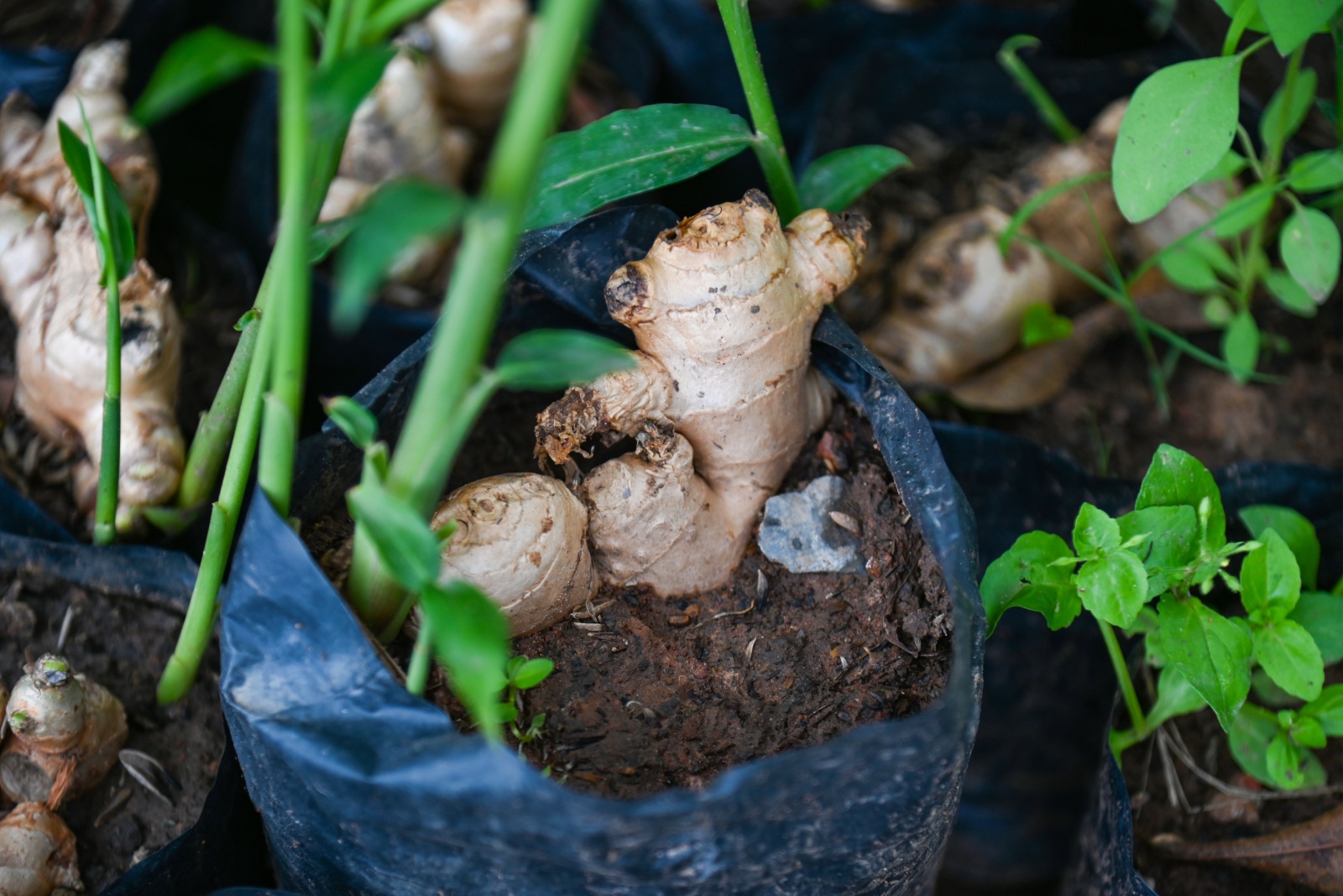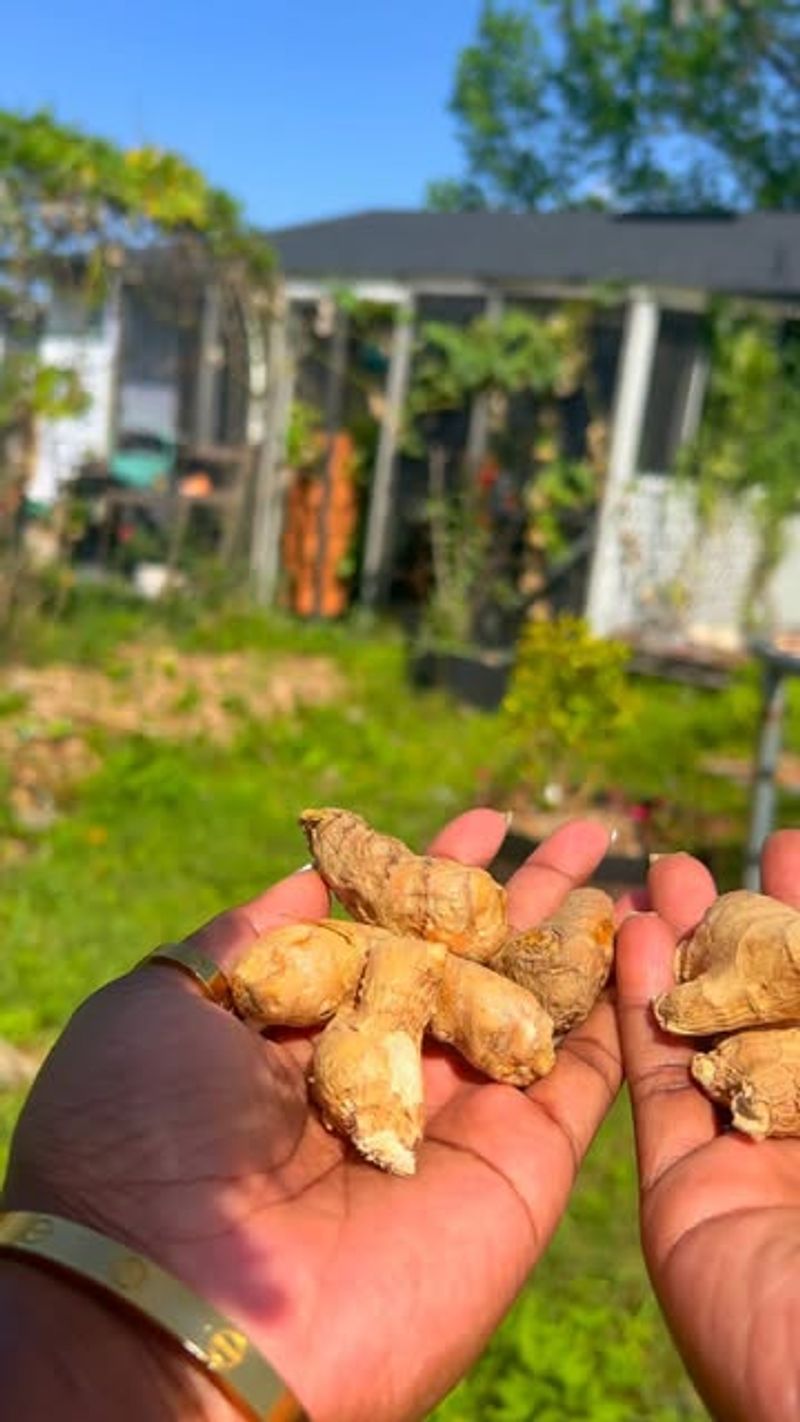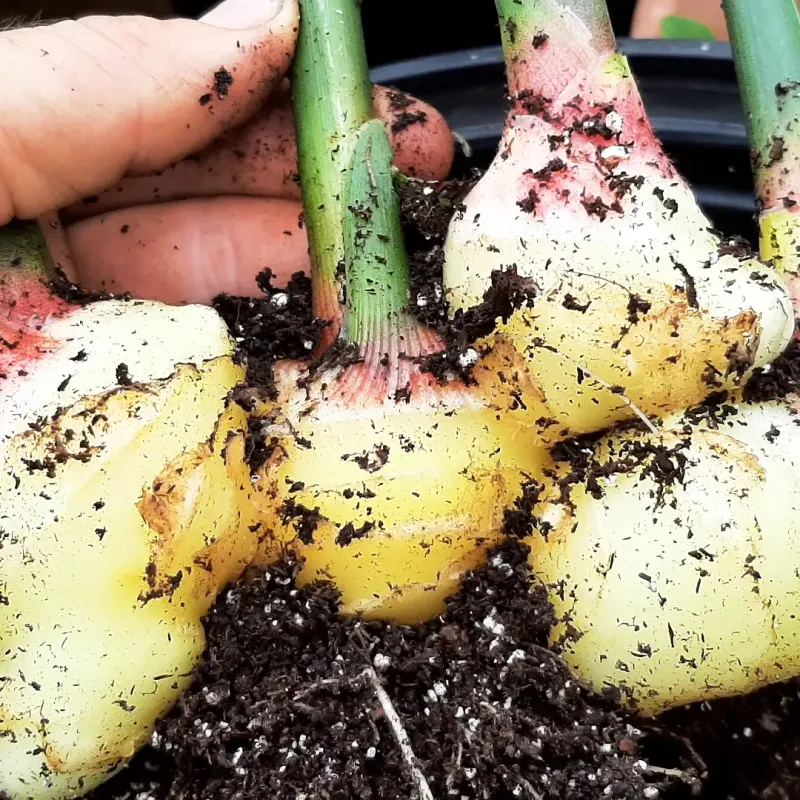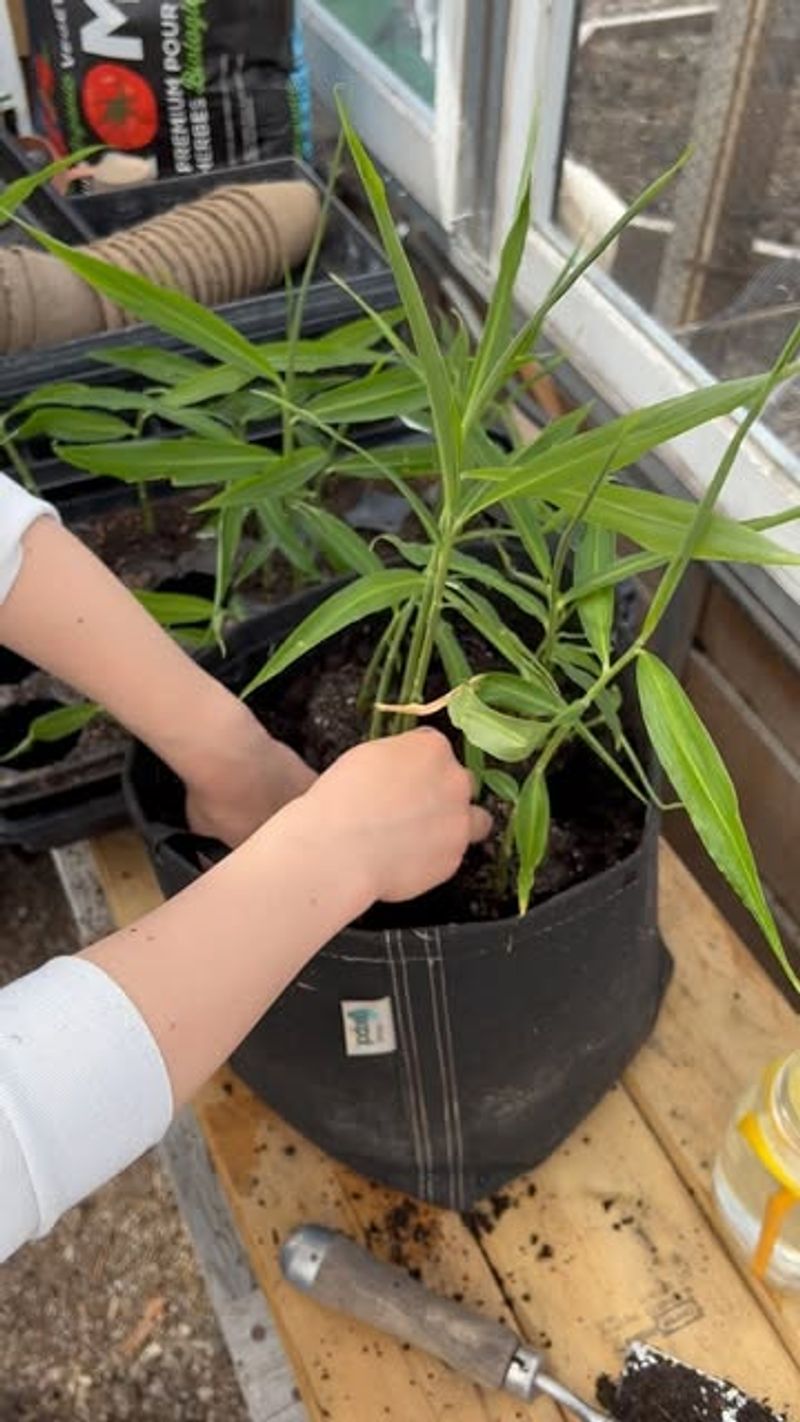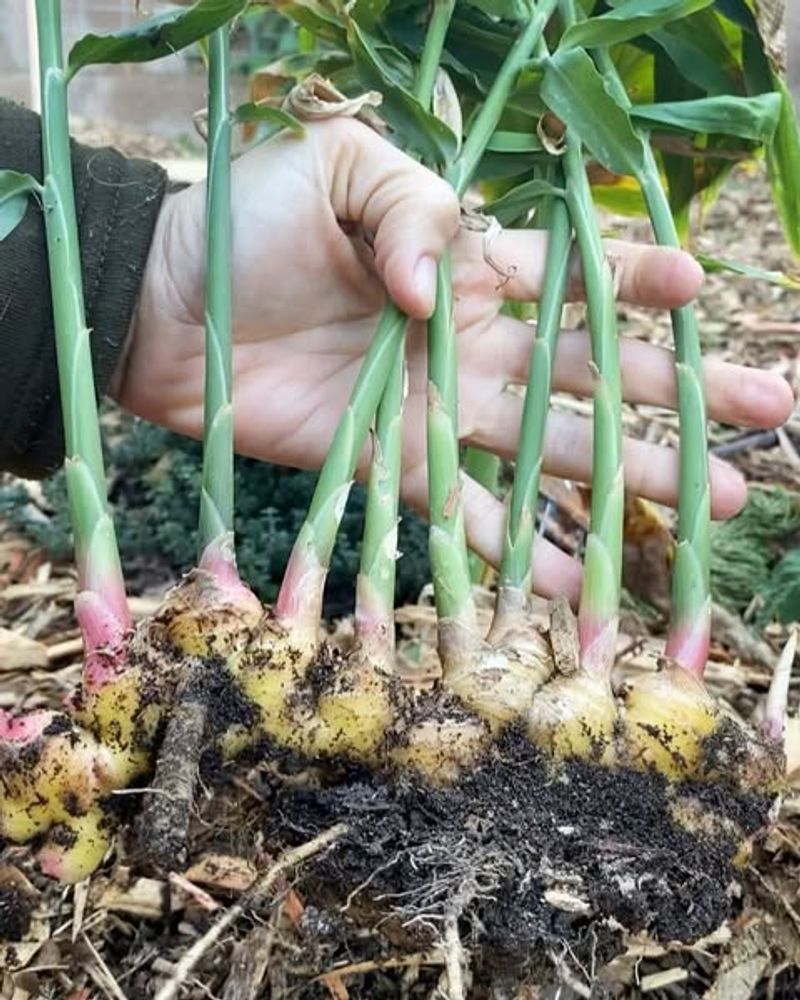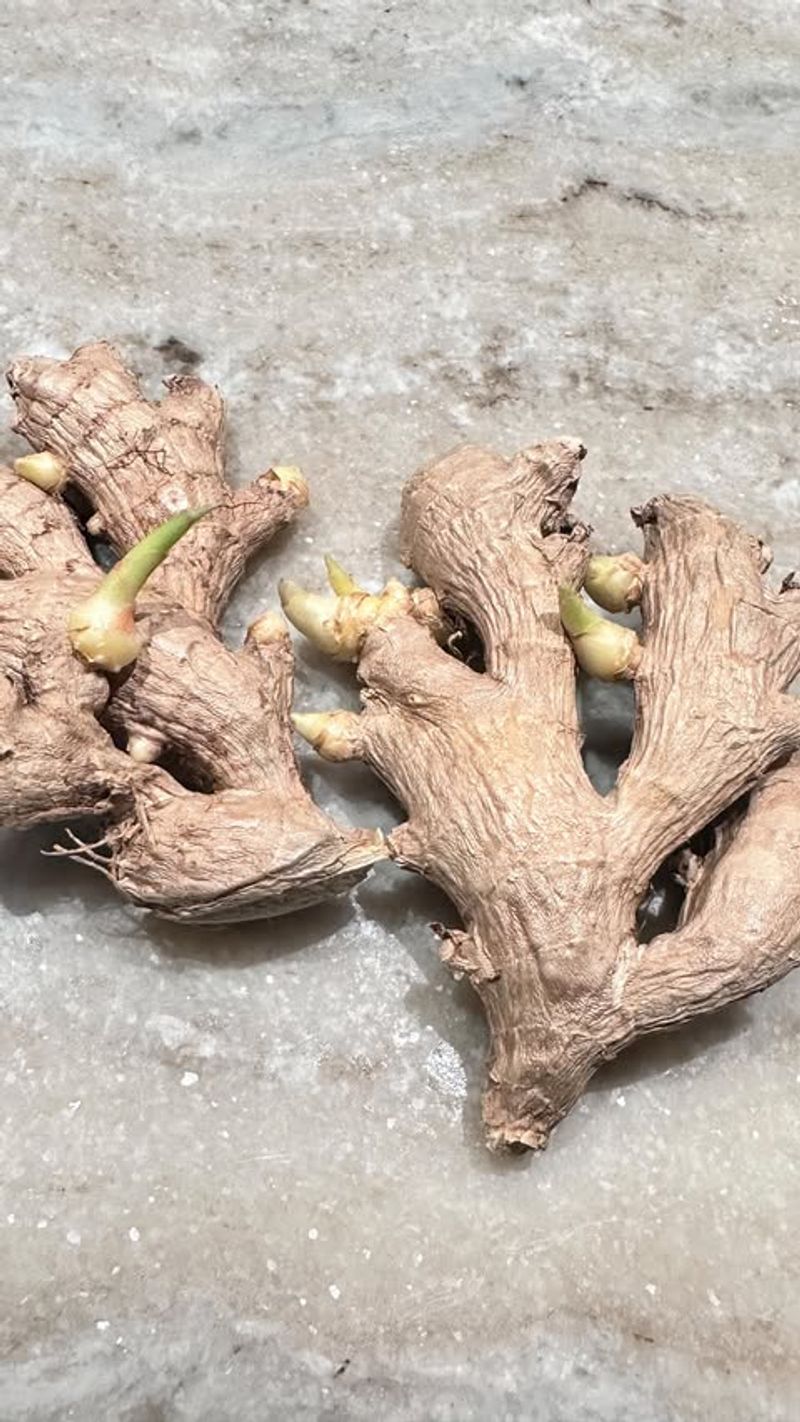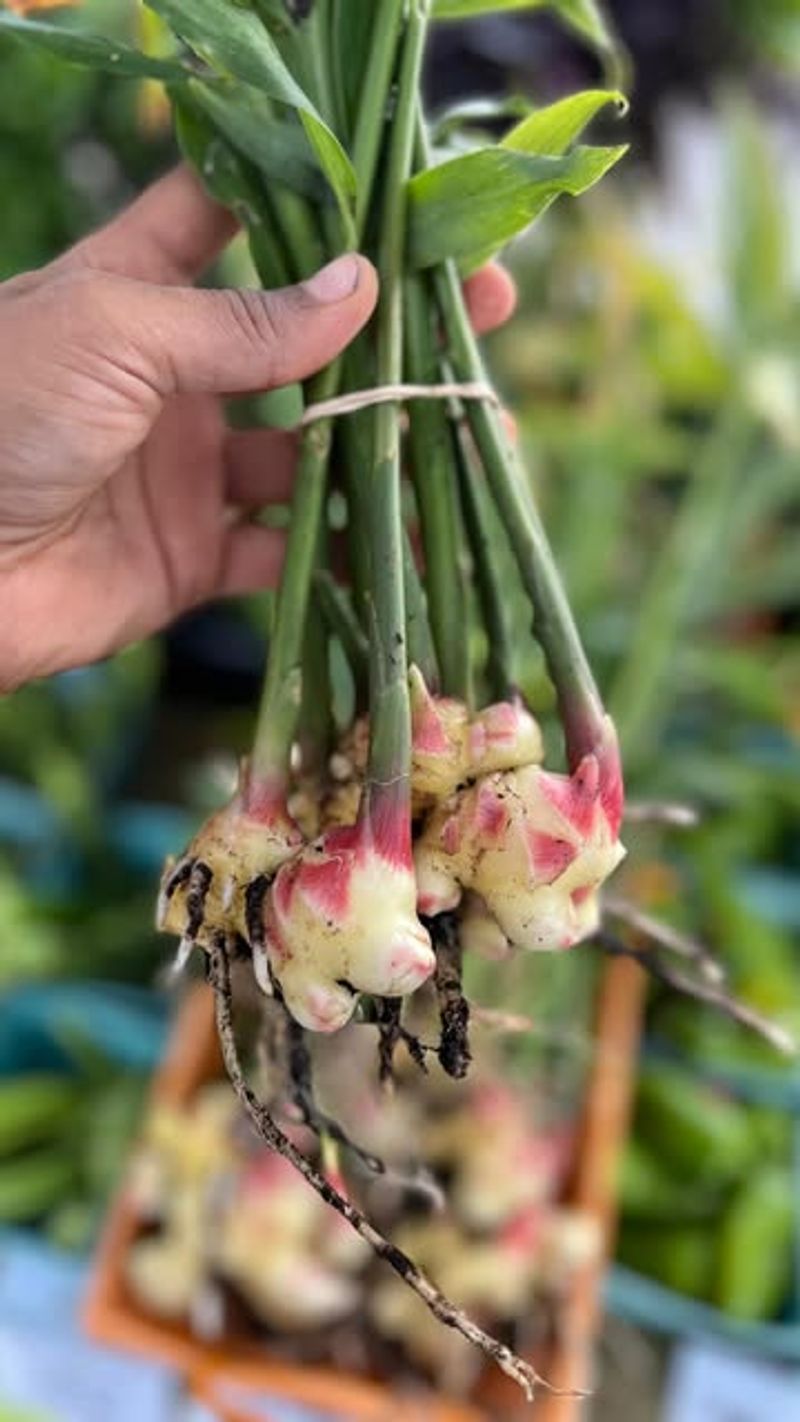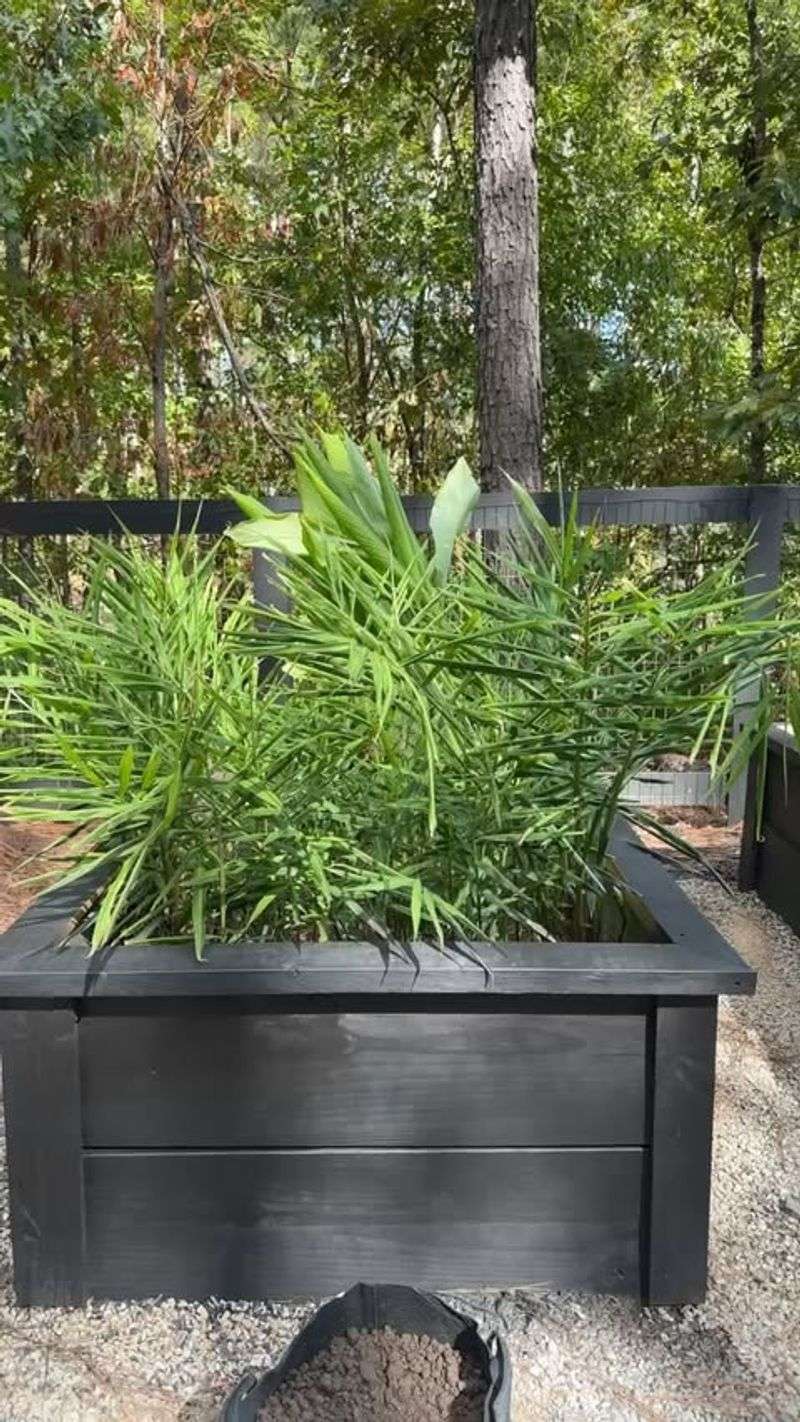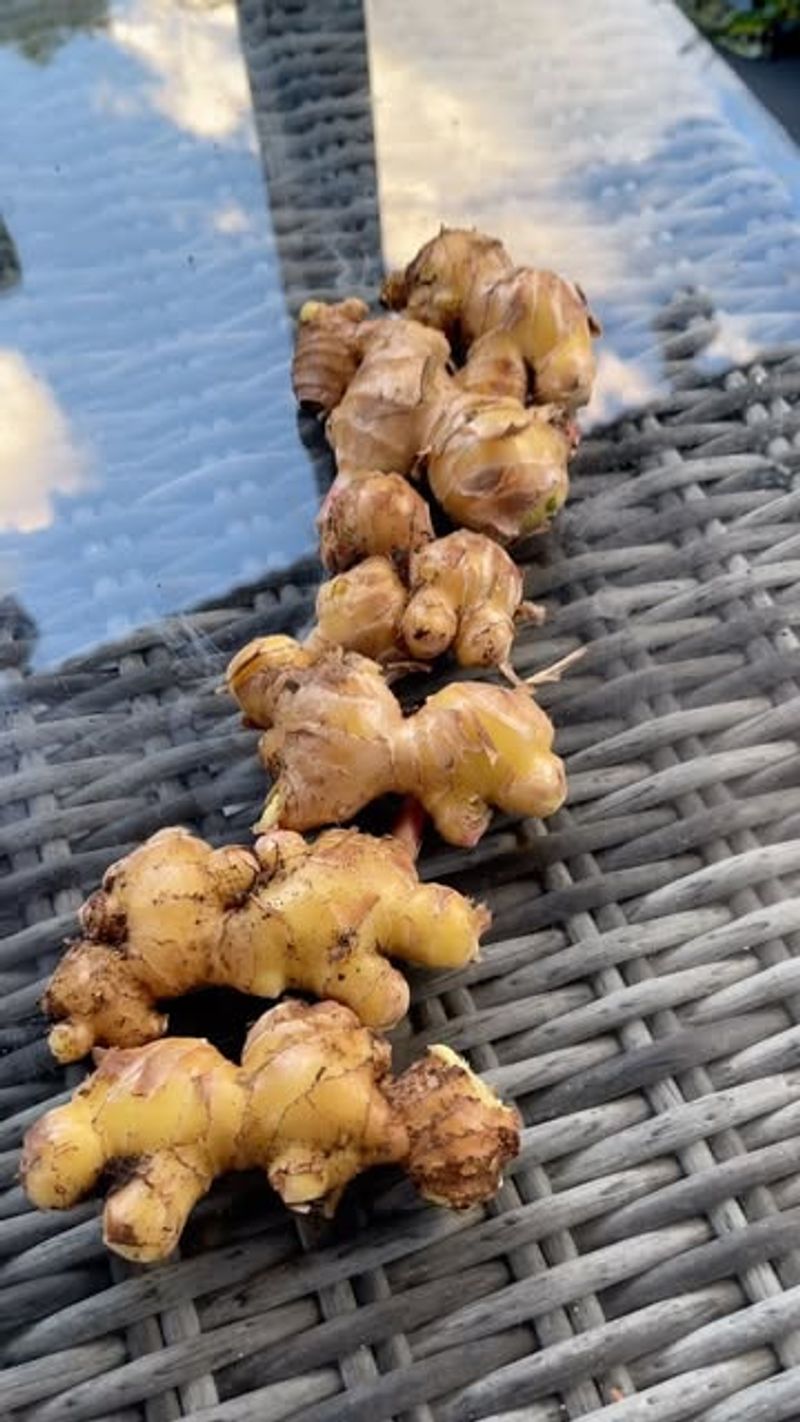Growing ginger at home in Georgia is easier than you might think, and it can save you money while adding fresh flavor to your cooking. With the right conditions and a little patience, you can harvest your own ginger root year after year.
Whether you have a backyard garden or just a sunny windowsill, this guide will show you simple steps to grow endless ginger right at home.
1. Select Fresh Ginger Root From The Store
Your ginger-growing adventure begins at your local grocery store or farmers market. Look for plump, firm rhizomes with visible growth buds, which look like small bumps or eyes similar to potato sprouts.
Organic ginger works best because regular store-bought ginger is sometimes treated with growth inhibitors. Pick pieces that feel heavy for their size and avoid any that look dried out, moldy, or wrinkled, as these won’t sprout well in your garden or container.
2. Prepare Your Ginger For Planting
Once you have your ginger, let it sit in a warm spot overnight to encourage sprouting. If your rhizome has multiple growth buds, you can cut it into smaller sections using a clean, sharp knife.
Each piece should be about two to three inches long with at least one or two healthy buds. Allow the cut pieces to dry for a day or two so the cuts can heal over, which helps prevent rot when you plant them in soil.
3. Choose The Right Container And Soil
Ginger loves loose, well-draining soil that stays moist but never waterlogged. Mix regular potting soil with compost and a bit of sand or perlite to improve drainage and add nutrients.
Pick a wide, shallow container that’s at least 12 inches across and 10 inches deep, with drainage holes at the bottom. Since ginger roots grow horizontally rather than deep down, a broad pot gives them plenty of room to spread out and produce more rhizomes for future harvests.
4. Plant Your Ginger Correctly
Bury each ginger piece about two inches deep with the growth buds pointing upward toward the sky. Space multiple pieces about six to eight inches apart if you’re planting more than one in the same container.
Gently cover them with soil and give them a thorough watering to settle everything in place. Keep the soil consistently moist during the first few weeks, but be careful not to overwater, as soggy conditions can cause the rhizomes to rot before they sprout.
5. Provide Warm Temperatures And Humidity
Ginger is a tropical plant that thrives in warm, humid conditions similar to its native Southeast Asian environment. In Georgia, you can grow it outdoors during the warm months from late spring through early fall when temperatures stay above 50 degrees.
During cooler seasons, bring your containers indoors to a warm spot near a window. Misting the leaves occasionally or placing a humidity tray nearby helps recreate the moisture-rich air ginger loves, encouraging healthy growth and better yields.
6. Water And Feed Regularly
Keep your ginger’s soil consistently moist, like a wrung-out sponge, but never let it sit in standing water. Water whenever the top inch of soil feels dry to the touch.
Feed your plants every few weeks with a balanced liquid fertilizer or compost tea to provide essential nutrients for strong growth. During Georgia’s hot summer months, you may need to water more frequently, especially if your containers are sitting outside where they can dry out quickly under the intense sun.
7. Give Your Ginger Partial Shade
Unlike many vegetables that crave full sun, ginger prefers filtered light or partial shade, especially during Georgia’s scorching summer afternoons. Too much direct sunlight can scorch the leaves and stress the plant.
Position your containers under a tree, on a covered porch, or in a spot that gets morning sun and afternoon shade. If growing indoors, place them near a bright window with indirect light rather than harsh, direct rays streaming through the glass all day long.
8. Harvest And Replant For Endless Supply
After eight to ten months, your ginger is ready to harvest when the leaves start turning yellow and dying back naturally. Carefully dig around the edges and pull up the rhizomes, keeping some pieces with good buds for replanting immediately.
By replanting a portion of each harvest, you create a continuous cycle of fresh ginger year after year. Store harvested ginger in a cool, dry place or freeze it for long-term use while your next crop grows strong and healthy.

